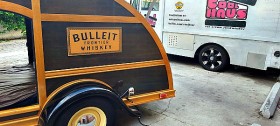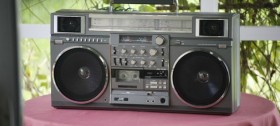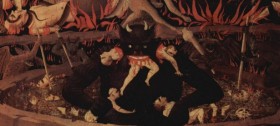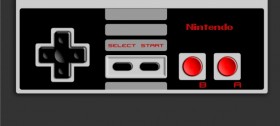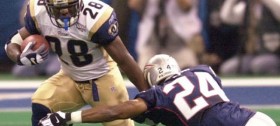Posts tagged Rutledge Wood

Guest Post: Car Maintenance Made Easy with Simple Tips from a Gear Head
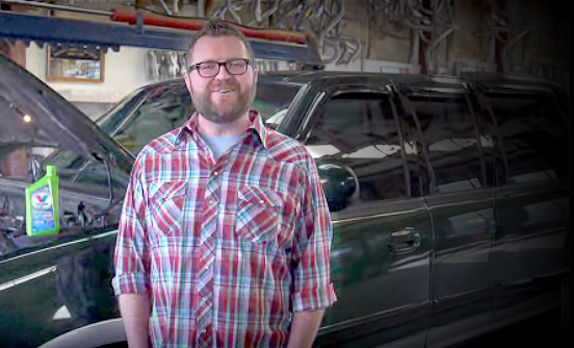
(Editor’s Note: The following guest post is from Rutledge Wood, the host of Top Gear U.S. on the History Channel, a NASCAR correspondent on SpeedTV and Valvoline spokesperson.)
Everyone knows car maintenance is important, but if you’re not a gear head – someone who loves working on vehicles – the idea of doing routine car maintenance can be very intimidating.
Whether on the set of Top Gear, at NASCAR races or just in my garage at home, I’m fortunate enough to be around cars a lot. I love driving them, repairing them and tinkering with them. However, for a lot of people, cars can be a confusing and even intimidating piece of machinery to work on.
To help people feel more comfortable in maintaining their vehicles, here are some simple tips that can make anyone feel like a gear head.
Change your oil
While many don’t find the prospect of being under a car messing with greasy filters their idea of a fun Sunday afternoon, changing a car’s oil isn’t as daunting a task as it seems. Here are a few easy tips:
1. Make sure your engine is cool before you start, then safely jack up your car and support it with jack stands. Lay a piece of cardboard under the engine, just in case you spill any oil.
2. Position a recycling container under the oil pan that’s on the bottom of your engine, then undo the drain plug and let the old oil pour into it. When the old oil’s out, put the drain plug back on and tighten it to your car’s torque specification.
3. Next, remove your old oil filter using an oil filter wrench; turn the filter counterclockwise until it’s free, but watch out you don’t spill the old oil that’s still in it. Make sure the rubber gasket comes out with the old filter.
4. Then, taking your new oil filter, lubricate the rubber gasket with some new oil and fill the new oil filter with oil to about two-thirds full.
5. Carefully screw the new oil filter clockwise into place (holding it upright); tighten only as much as you can with one hand, don’t overdo it or else it can cause a leak.
6. Now it’s time to fill the engine with oil, so unscrew the oil fill cap on the topside of the engine and insert your funnel. It’s smart to check your owner’s manual to find out how much oil your engine holds if you’re unsure, then pour a little more than three-fourths that amount into the engine.
7. Finally, start your vehicle and let it run for about a minute. During that minute, take a peek underneath to make sure you don’t have any leaks. After a minute, turn off you vehicle and check the oil level on the dipstick, adding more if necessary.
I use and recommend Valvoline NextGen Oil. It works great and since it’s made with 50 percent recycled oil, it’s good for the environment as well. To sweeten the deal, they’ve even come out with a ’Close the Loop’ program where they’ll give you a $20 mail-in offer if you return your used oil at participating auto parts stores and buy five quarts of NextGen for your next oil change.
Clean up cloudy headlights
It may seem obvious that your headlights are one of the most critical safety features on your car, but what’s not always top of mind is how quickly they can become yellowed, hazed or dull from rough road conditions and exposure to the sun. This can lead to severely diminished visibility for yourself and other drivers, especially when driving at night or in poor weather.
Replacing or professionally restoring headlight lenses can cost hundreds of dollars. Options like the 3M Headlight Restoration Kit – No Tools Required allow you to use basic DIY skills and a little elbow grease to sand, smooth, and polish your way to clearer lenses from the comfort of your own garage. This easy-to-use kit includes a series of hand-held abrasives and rubbing compound that’s used to remove yellowing and surface blemishes, and then refine and polish the lenses to reduce and remove scratches.
Check your tires
Worn treads are a major safety issue while on the road, leading to hydroplaning, poor traction as well as reduced fuel efficiency. Luckily, checking your tread wear is simple. Look at the tread pattern. You’ll probably see something called “tread wear bars.” These are small bridges between your treads. Look at the tread pattern and you’ll see the beginnings of these bars start to form between the treads, or running across the tires. As the tires wear, these bars will become flush with the tire’s tread. If they are, then it’s time to change your tires.
Another simple trick is to head for the change jar. Just grab a penny and place it upside down with Lincoln facing you in the center of the tread (at the thickest part of the tire). If you can see the top of his head it’s time to get new tires.
By following these tips, you might not quite be ready to join a NASCAR pit crew just yet, but you’ll be well on your way to becoming a true gear-head.
Jul 12th
